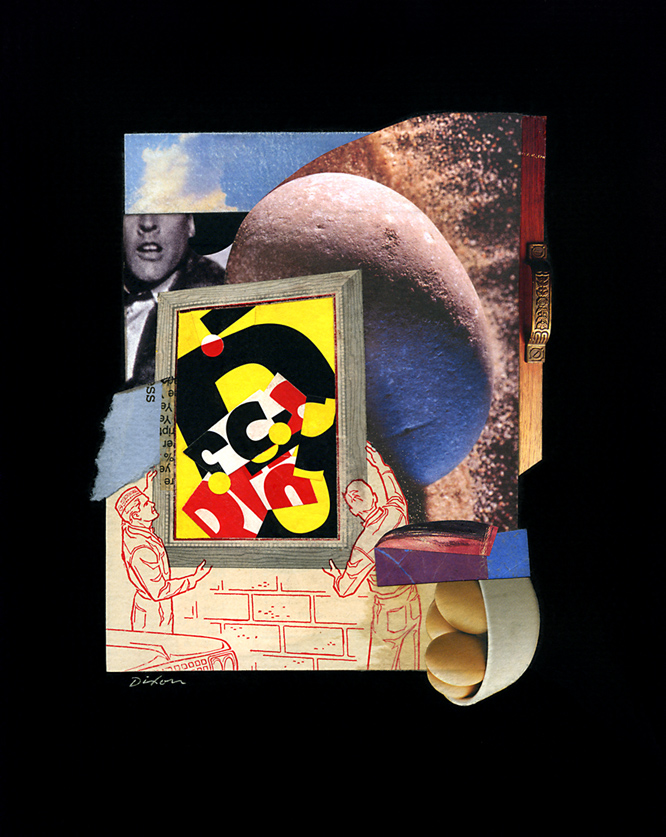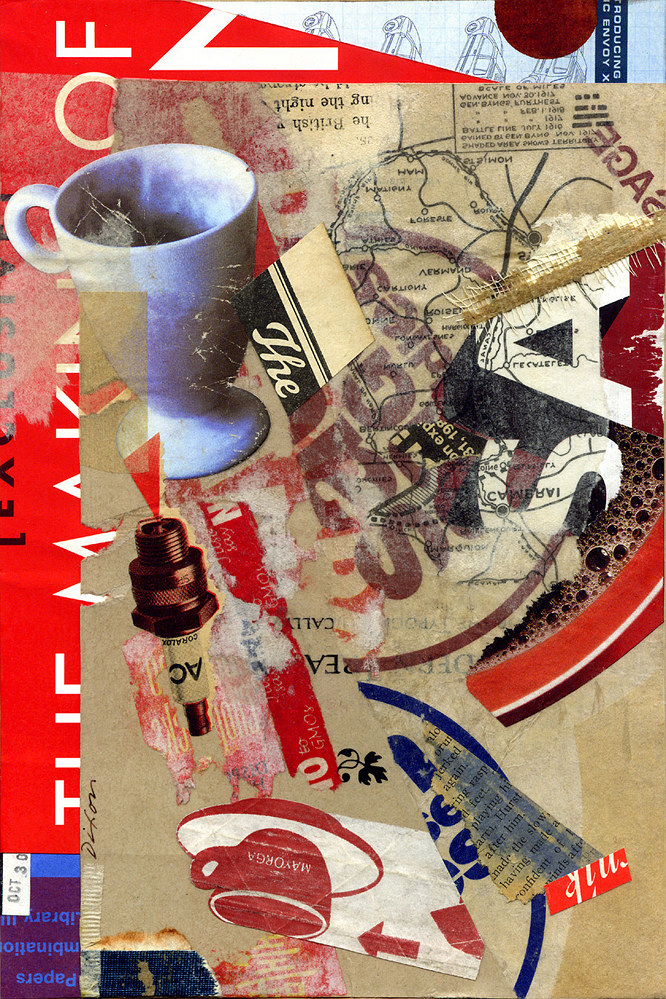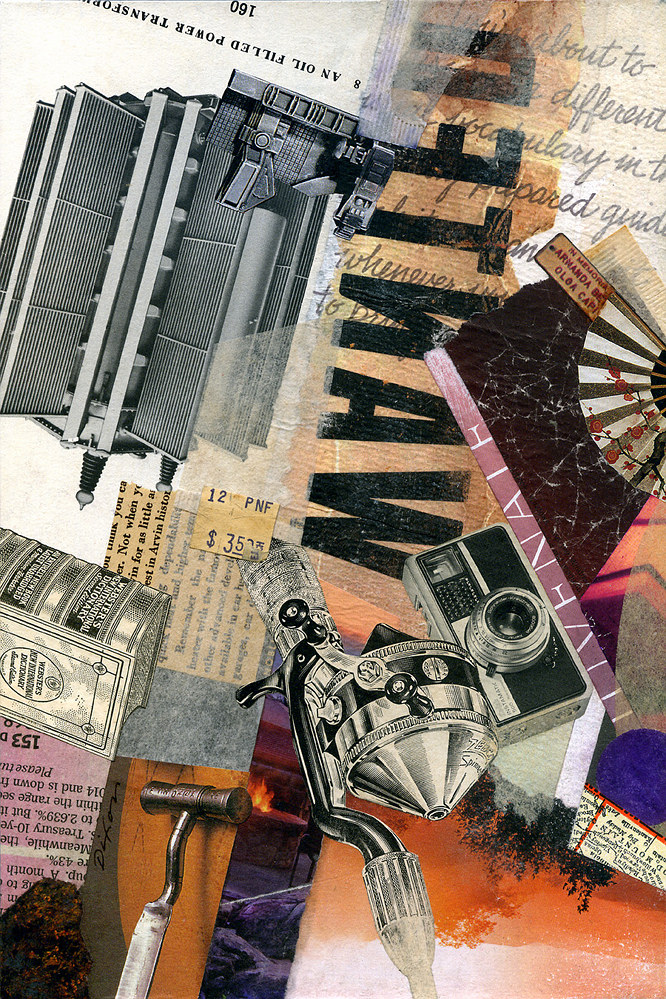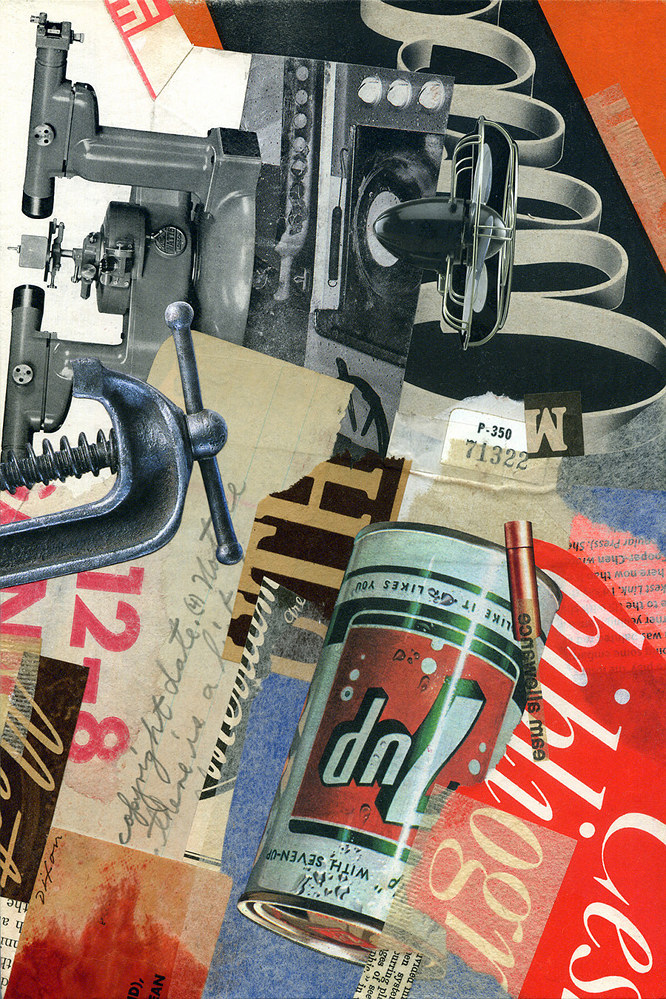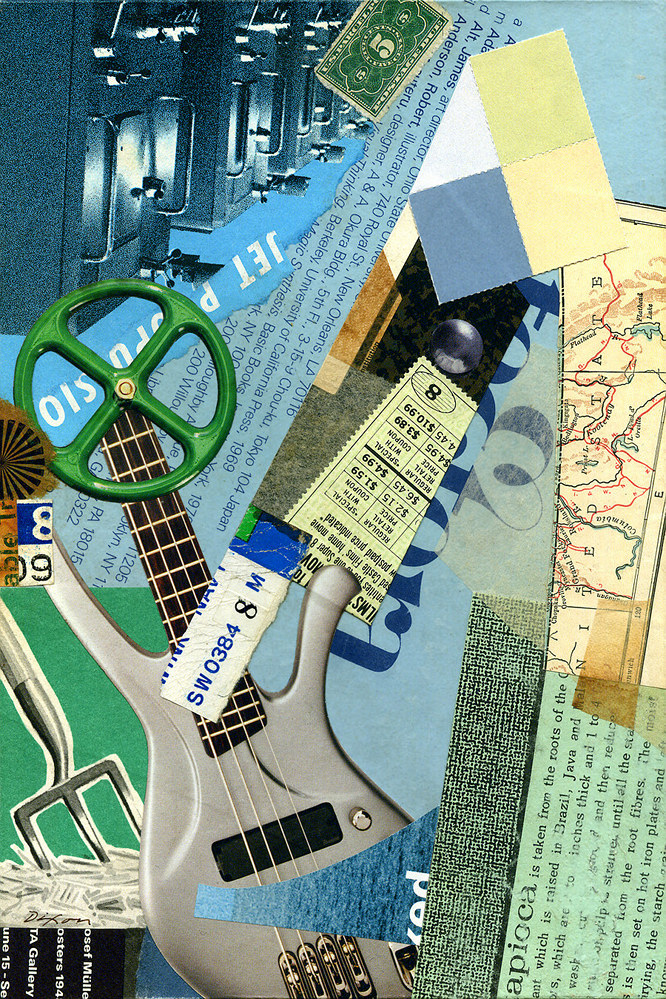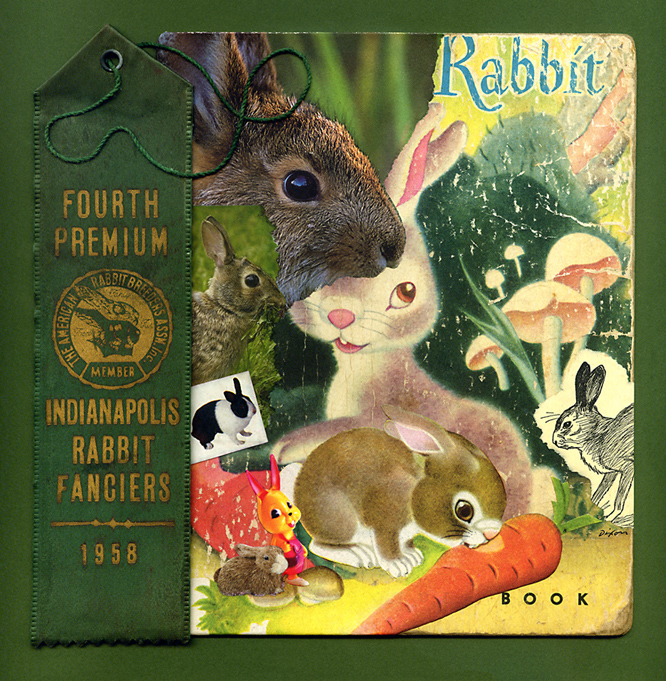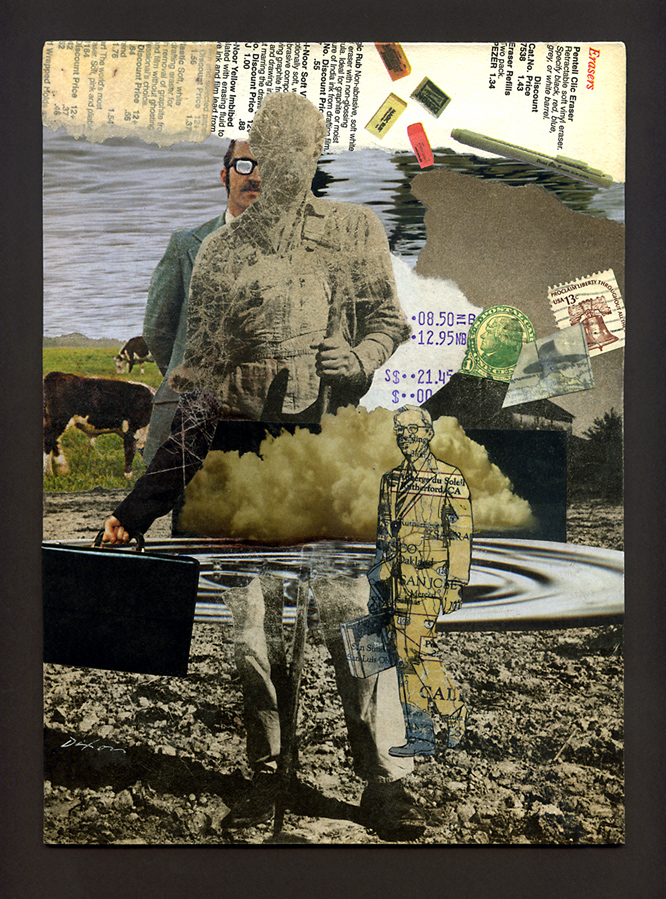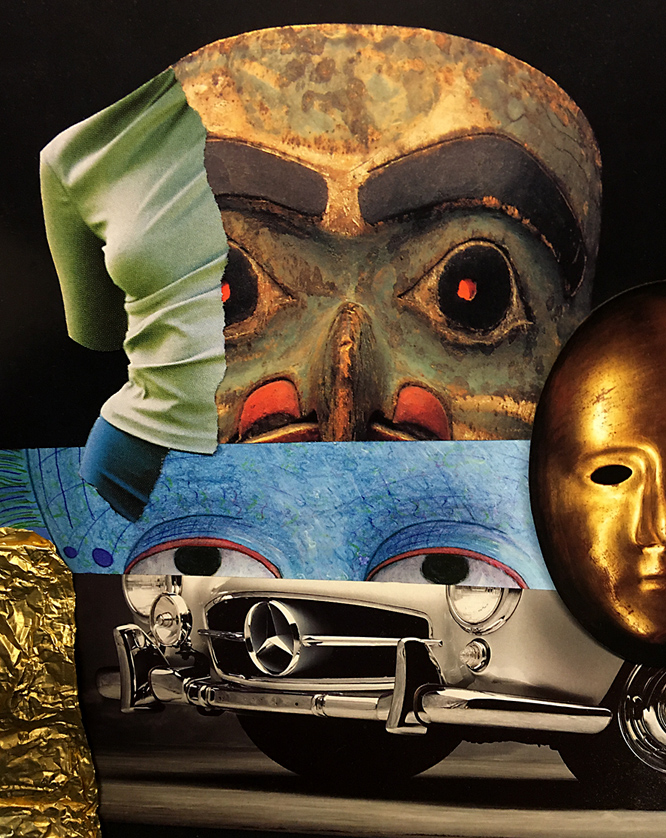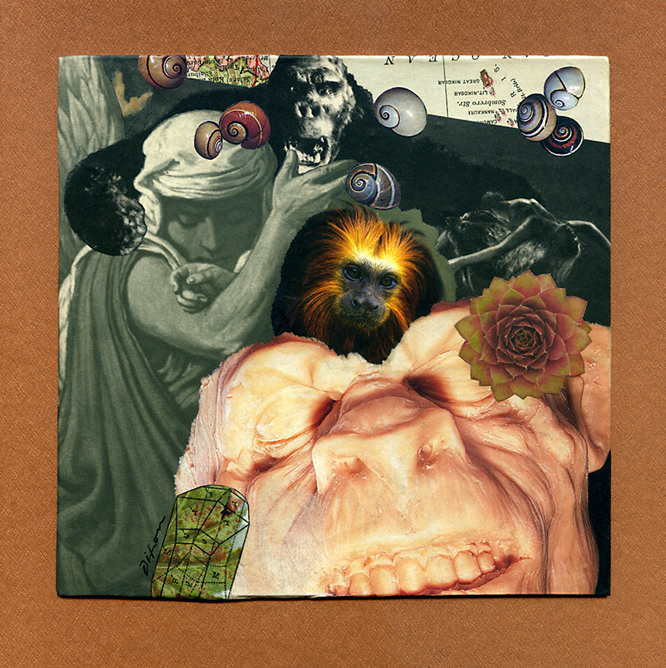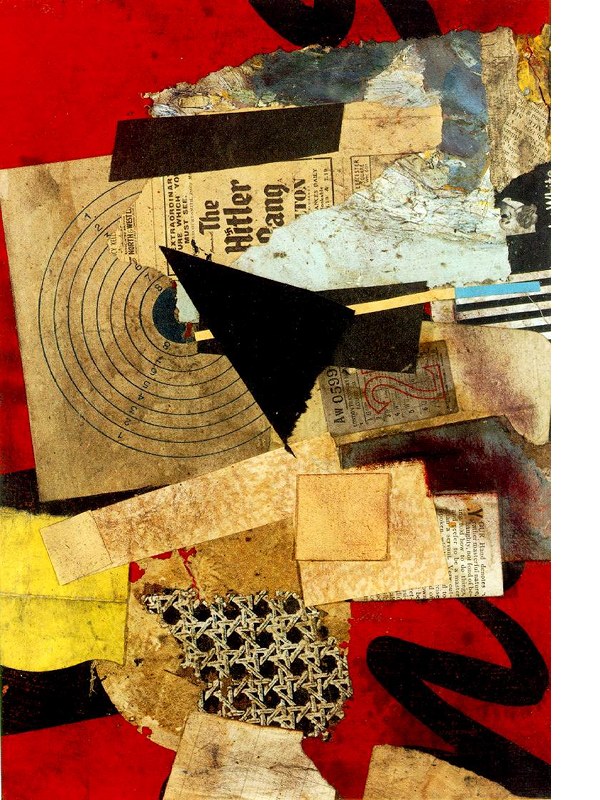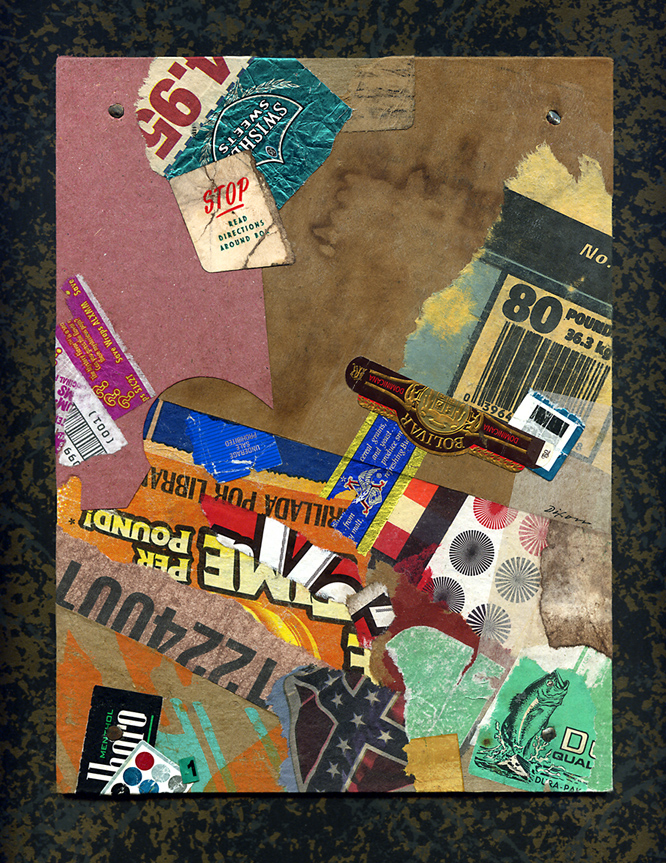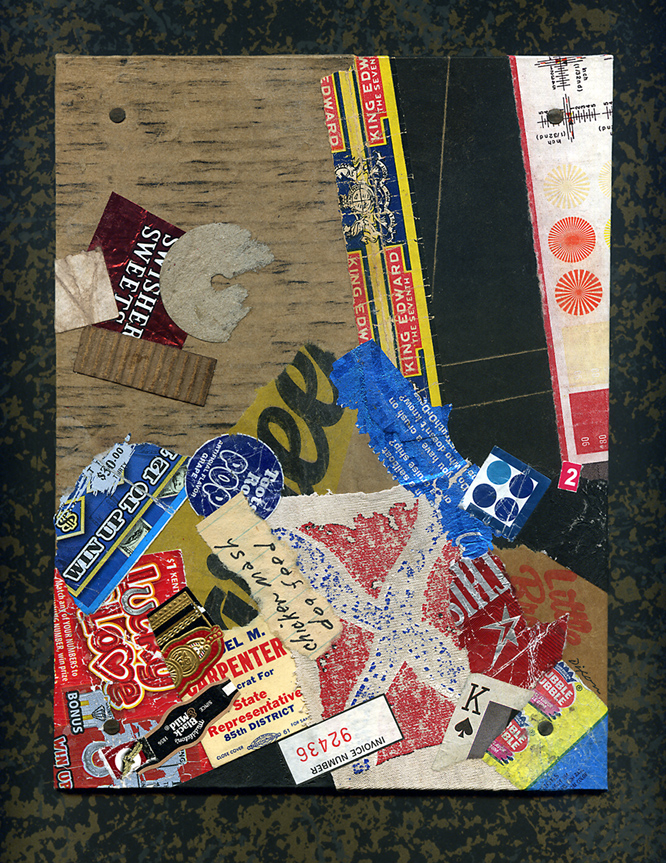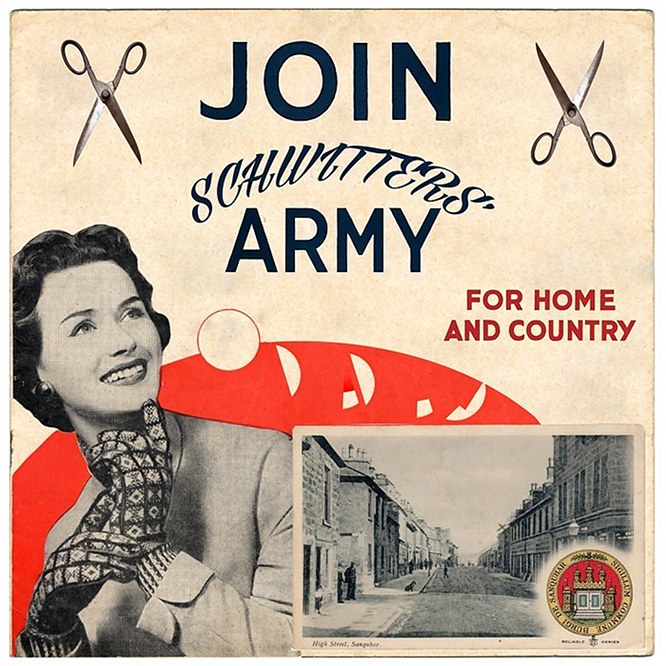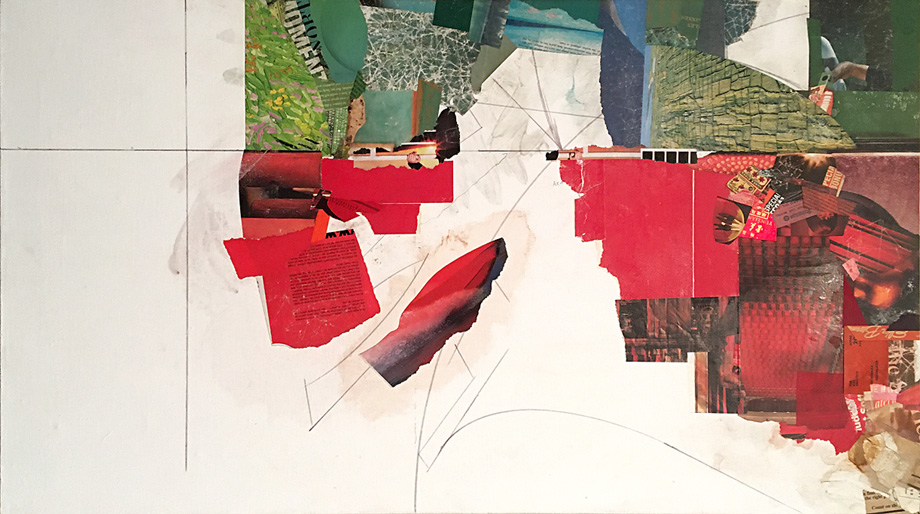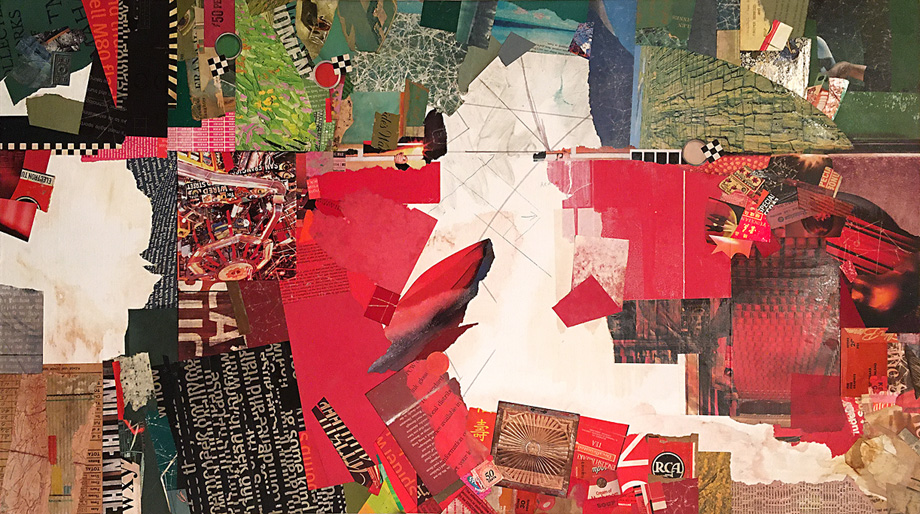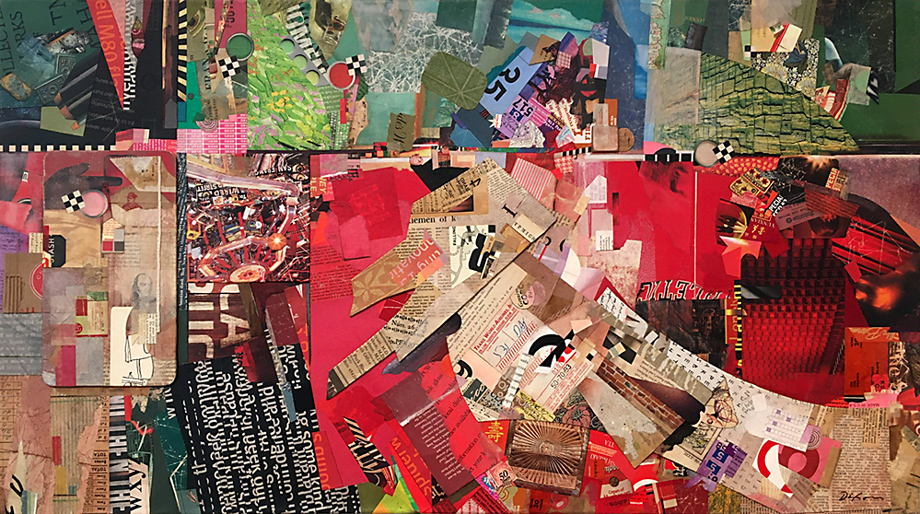“Works will be sorted and exchanged as equally as possible according to quality. The intention of all of the Museum’s exchanges is to establish a dialog and exchange of ideas about how to work in the mediums of collage and montage among colleagues. By exchanging actual examples we get to see first hand how each other works. This is intended to lead to higher standards and more inspired and satisfying work.”
— Cecil Touchon
Not having participated in an international collage exchange since 2016, I set my sights on the spring installment of a tradition established at the International Museum of Collage, Assemblage and Construction.
The basic reference point for the exchange is the customary 12 donuts plus free sample. “Except, to make it easier, we have changed it to a Baker’s 1/2 Dozen Exchange,” according to Cecil Touchon, the Museum’s director. Six to trade with contributing artists and one to be retained as part of the Museum’s permanent collection for future study and exhibit.
I created a series of eleven miniatures within a common black-background theme and kept three for myself. From the remaining eight, I identified one as a specific donation to IMCAC (featured below), with the understanding that Touchon would select another for retention and supply the others to designated participants. I couldn’t help but insert a visual homage to the typographic artist himself. Now all I have to do is wait patiently before I get back six original artworks by collage contemporaries.
The original notion of a collage museum compiled by generations of artists themselves (rather than patrons, collectors, or philanthropists) is a powerful idea to me. I can never tip my hat to Cecil often enough. Archiving the large and growing repository is both a labor of love and a significant gesture of commitment to the medium. Working collage artists should be honored to support the cause and make their best effort to be included in the Museum’s flagship collection intended for traveling exhibitions. A good way to do it is to dedicate some creative time to their periodic exchange. And each of us receives valuable artwork in return.
The Fog of Glazed Eggwash
collage miniature by J A Dixon
8 x 10 inches
part of a series created for the
Baker’s 1/2-Dozen Collage Exchange
— donated to the IMCAC permanent collection
